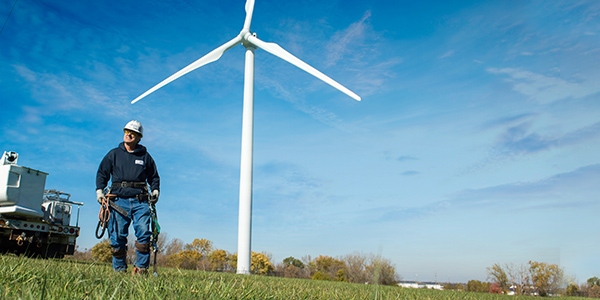By Amanda Durish Cook
The growth of distributed generation means the MISO grid will become increasingly fraught with planning challenges that require target responses, stakeholders heard Tuesday.
“We’re doing our best to adapt, and no one really knows what the future holds, but we can add more visibility into our planning processes,” MISO DER Program Director Kristin Swenson said during a joint workshop hosted by the RTO and the Organization of MISO States. The workshop was the latest in a series that the organizations have been hosting since 2017 to prepare for grid changes under widescale DER adoption. (See MISO Explores Changes to Accommodate DER.)
Swenson also said MISO is beginning to see improved coordination between transmission and distribution systems for planning purposes.
MISO contains about 4.5 GW of unregistered DERs in its footprint, according to an OMS survey completed last year. (See OMS: 4.5 GW of Unregistered DERs in MISO.) It also has about 16 GW in registered DERs participating in the market both in front of and behind the meter. For now, MISO’s definition of DER includes demand response and energy efficiency. RTO staff say its DER definition could change when FERC issues its own definition.
Iowa Utilities Board attorney David Schmitt said that a few MISO utilities with large penetrations of DERs in their territories have experienced backflow on the transmission system, though most have yet to experience any impacts.
Swenson said the distribution system in some instances can provide a more attractive means of connecting to the grid for new, smaller generators than the MISO system, which is running out of capacity in the West region.
“We have folks who are frustrated with the MISO interconnection queue who turn to the distribution system. There is distribution capacity in some cases where there isn’t transmission capacity. … I can imagine that can provide a path to getting a project done that otherwise couldn’t be,” Swenson said.
DER experts said MISO should plan for an uneven adoption across the footprint, with some areas becoming hotspots of activity.
Stacy Van Zante, manager of delivery system planning for Alliant Energy, said her company’s Iowa subsidiary, Interstate Power and Light, contains about 204 MW of distributed generation, with 4,441 interconnections on the distribution system.
“In some areas, we don’t see a lot of distributed resources, but in other areas, what’s happening in Iowa is akin to California,” Van Zante said, describing neighborhood hotspots of solar adopters or projects on college campuses. “People are adopting at different rates.”
Planning for Every Hour
Van Zante said Alliant will examine the possible benefits of wind interconnections on the distribution system. If a distributed resource can benefit the surrounding system, the interconnection customer won’t bear the entire cost of the interconnection, she said.
She also noted Alliant has found that wind interconnections cause “wear and tear” on load tap changers on station transformers.
“We lived at the world of peaks, but that’s changing. There’s a lot of activity on the system,” Van Zante said, adding that Alliant is looking at the need for 8,760 hourlong load profiles for planning — one for each hour of the year.
“We want to avoid stranded investments,” she said.
Richard Mueller, DTE Energy’s manager of engineering technology, also agreed that planning is quickly evolving from peak loads.
“It’s changing the times we’re evaluating,” Mueller said.
John Schmall, of ERCOT’s Dynamic Studies Department, said the grid operator has tracked some of its DER influx by requiring distributed generators greater than 1 MW that plan to export energy into the distribution system to register with it.
However, he said ERCOT is still grappling with the challenges DERs can present to transmission planning, like accurate DER modeling and aggregation, and how to best represent unregistered DERs in planning and forecast their growth. He also said ERCOT is also studying DER impact on voltage recovery.
Schmall also agreed that peak times will become increasingly hard to predict.
“When you have a mix of solar and wind, and a diesel generator and energy storage, that’s something that will be a challenge in getting that information, to know when you charge and don’t charge. … There are big question marks that still need to be worked out,” Schmall said.
MISO currently makes DER penetration projections in the roughly 15-year future scenarios used in its annual Transmission Expansion Plan (MTEP), using estimates from Applied Energy Group, which is currently wrapping up updated DER forecasts for MTEP 20.
MISO will hold another DER workshop March 31 that will focus on DERs and how they could affect the RTO’s markets.




